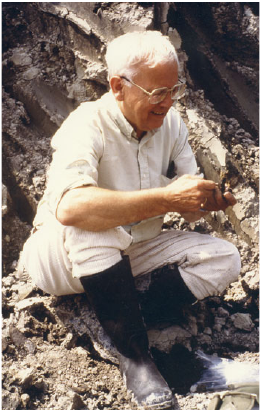Sinds begin 2019 zijn alle artikelen van de Nederlands Journal of Geosciences open access. De artikelen zijn te vinden op de website van Cambridge University Press via deze link.
Het meest recente artikel is geschreven door: Henry Hooghiemstra en Wim Z. Hoek. Getiteld: Waldo Heliodoor Zagwijn (1928-2018): the instigator and architect of European chronostratigraphy.
Het artikel is een ode aan Emeritus Professor Zagwijn van de faculteit aardwetenschappen aan de Vrije Universiteit van Amsterdam. De bevlogen palynoloog en paleobotanist genoot internationale bekendheid en erkenning, zelfs na zijn pensionering.
Abstract:

On 26 June 2018 Waldo Heliodoor Zagwijn died at the age of 89. He was an Emeritus Professor of the Faculty of Earth Sciences, Vrije Universiteit in Amsterdam. As a geologist, palynologist and palaeobotanist he focused on developing a stratigraphy of the Netherlands based on changes in vegetation and climate. The Dutch setting of a subsiding basin, and the clear signal of a sequence of glacial–interglacial cycles, was promising. As early as the late 1950s it became clear that the Quaternary Period included more than the previously assumed four ice ages in the Netherlands. In his PhD thesis Zagwijn defined the start of the Quaternary around 2.5 million years before the present (2.5 Ma). The international community accepted Zagwijn’s arguments after he retired. He showed how the rivers Meuse, Scheldt and Rhine had built the Netherlands in four dimensions. He is the instigator and architect of the climate- and chronostratigraphy of
the Quaternary Period of Western Europe.
